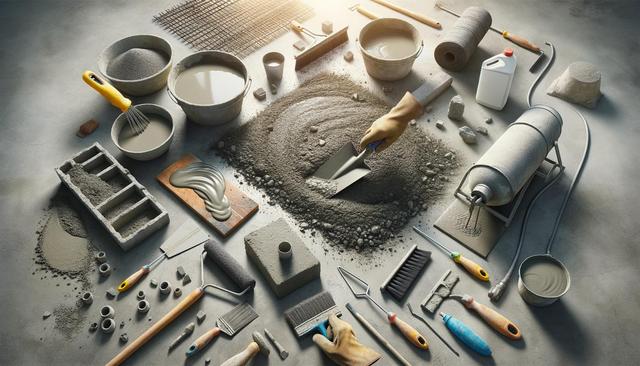What is Concrete Resurfacing?
Concrete resurfacing is a cost-effective method used to restore the appearance and functionality of existing concrete surfaces. Rather than removing and replacing the entire slab, a new layer of material is applied over the old surface to cover imperfections, cracks, and discoloration. This process not only enhances the aesthetic appeal but also extends the life of the concrete. Whether it’s a driveway, patio, walkway, or garage floor, resurfacing provides a fresh look while maintaining structural integrity.
Typically, the resurfacing material is a special blend of cement, sand, polymer modifiers, and other additives that improve bonding and durability. Once applied, the surface can be finished with various textures and patterns, giving homeowners and property managers the flexibility to choose a design that complements their space. It’s an ideal solution for surfaces that are structurally sound but need a visual upgrade or minor repairs.
Benefits of Choosing Resurfacing Over Replacement
Opting for concrete resurfacing instead of full replacement offers several practical benefits:
- Cost Efficiency: Resurfacing is significantly less expensive than tearing out and replacing concrete.
- Time-Saving: The process takes less time to complete, reducing downtime for both residential and commercial properties.
- Eco-Friendly: By preserving the existing slab, less waste is generated, and fewer resources are used.
- Customization: Surface finishes can mimic more expensive materials like stone or tile through decorative overlays and stamping.
Moreover, resurfacing can increase property value by enhancing curb appeal. This is particularly beneficial for homeowners looking to sell or lease their property, as a clean and updated exterior creates a strong first impression. With proper maintenance, resurfaced concrete can last many years, making it a long-term investment in your property’s functionality and appearance.
When is Concrete Resurfacing Appropriate?
While concrete resurfacing is a versatile solution, it’s not suitable for all types of damage. It’s most effective when the existing surface is structurally sound but shows signs of wear such as:
- Minor cracks that don’t affect the slab’s stability
- Surface spalling or flaking
- Discoloration or staining
- Uneven texture or fading finishes
If the concrete is severely cracked, sinking, or has significant structural damage, resurfacing alone may not be enough. In such cases, a professional assessment is recommended to determine whether resurfacing is viable or if deeper repairs are necessary. Proper surface preparation is crucial as well—cleaning, repairing minor defects, and ensuring a strong bond between the old and new layers are key steps to ensure durability.
Popular Resurfacing Techniques and Finishes
Concrete resurfacing offers a wide range of finishes that can enhance any space. Some of the most popular options include:
- Stamped Overlays: These mimic the look of brick, stone, or tile and provide a textured surface.
- Spray Textures: Commonly used for pool decks and patios, they offer slip resistance and a unique appearance.
- Self-Leveling Compounds: Ideal for indoor applications, these create a smooth, modern finish that’s perfect for basements and commercial spaces.
- Stained Concrete: Adds color and visual interest with a semi-transparent finish that highlights the texture of the surface.
Each technique caters to different aesthetic preferences and functional needs. For outdoor areas, choosing a slip-resistant finish enhances safety, especially in wet conditions. Indoor spaces can benefit from polished or stained finishes that offer a contemporary look with easy maintenance. The adaptability of resurfacing materials allows property owners to get creative with patterns, borders, and colors to customize their spaces.
Maintenance and Longevity of Resurfaced Concrete
Once a concrete surface has been resurfaced, proper maintenance is essential to preserve its appearance and functionality. Fortunately, resurfaced concrete is relatively low-maintenance. Regular cleaning with a mild detergent and water helps prevent dirt buildup, while resealing every few years protects against moisture and wear.
To maximize the lifespan of the resurfaced area:
- Keep the surface clean and free of debris
- Avoid using harsh chemicals that can erode the finish
- Repair small cracks or chips promptly to prevent further damage
- Apply a high-quality sealant as needed to protect against water, UV rays, and stains
When maintained properly, a resurfaced concrete surface can last 10 to 15 years or more. Environmental factors such as freeze-thaw cycles, heavy traffic, and exposure to chemicals can affect longevity, but with the right care, resurfacing proves to be a durable and cost-effective solution.




Leave a Reply